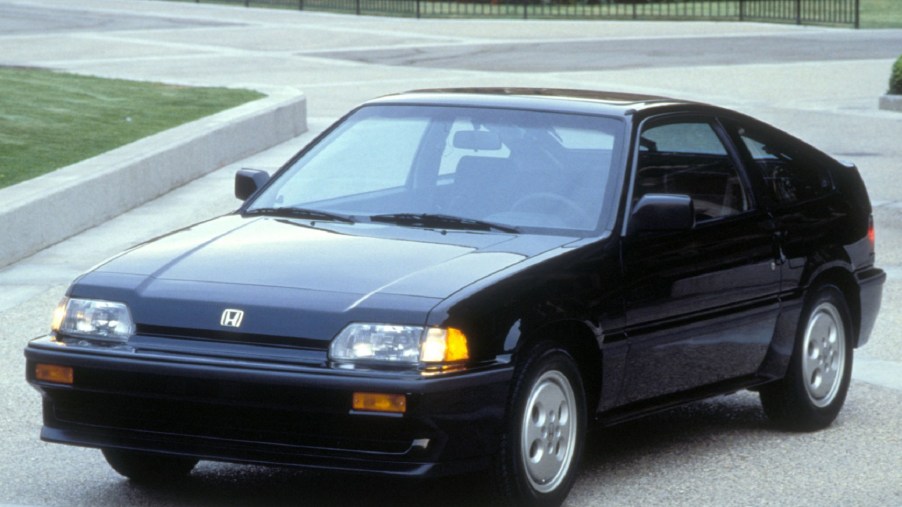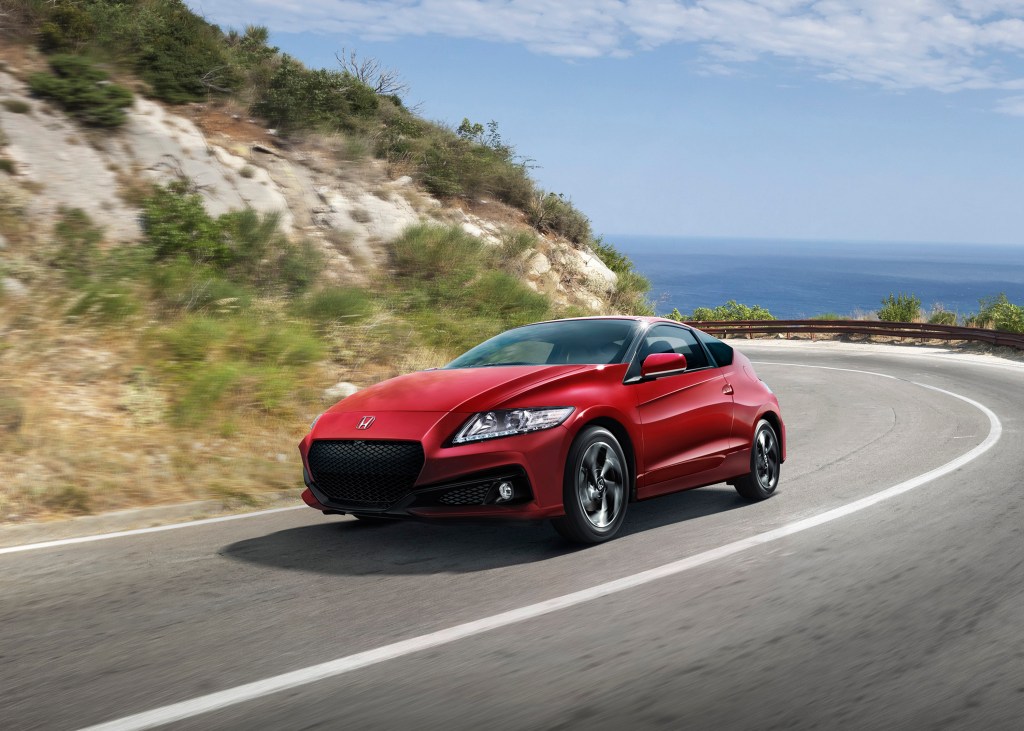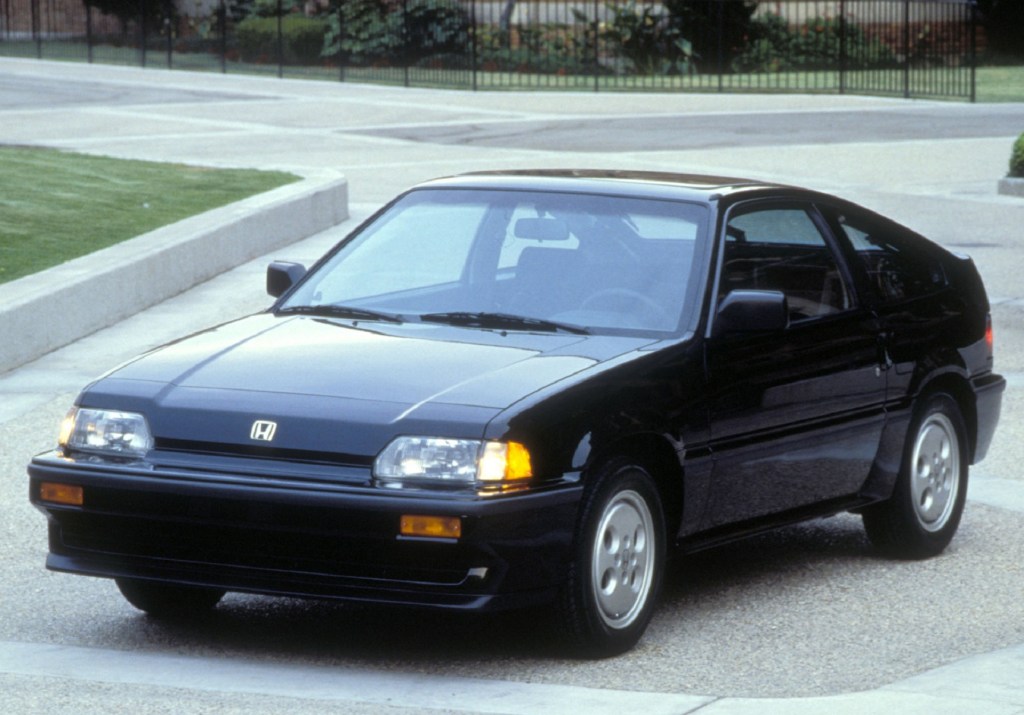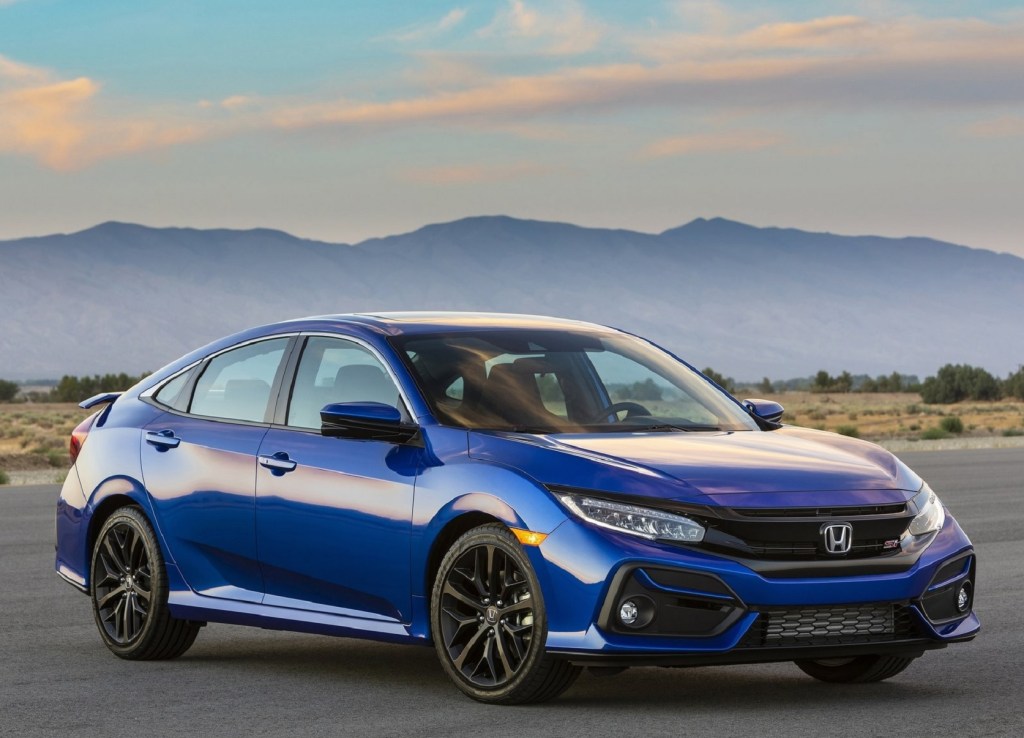
A Pristine 1985 Honda CRX Si Explains Why Radwood-Era Car Values Are Up
Before the Civic Type R landed in the US, Honda’s sportiest hatchback was the Civic Si. It actually pre-dates the first US-market Type R, the Acura Integra. And like many 80s and 90s cars, early Civic Si values have been on the rise. If you want to understand, one of the best examples is the 1985 Honda CRX Si that the Japanese automaker keeps in its archives.
The Honda CRX Si was the Civic Si of the late 80s and 90s

If the Honda CRX (or ‘CR-X’) Si’s name sounds familiar, there’s a good reason for it. Up until a few years ago, Honda sold a hybrid hatchback, the CR-Z, which directly referenced it. The CRX, though, was arguably sportier than the CR-Z, especially in Si form.
The Honda CRX launched in 1984 as a 2-seat coupe version of the contemporary Civic hatchback. And just like the modern Civic, it came in a variety of trims. For those interested in fuel-efficiency, there was the HF model. And for performance enthusiasts, there was the Honda CRX Si.

The first-gen Honda CRX Si arrived in 1985, Automobile reports. Like the HF, it has a 1.5-liter four-cylinder engine with a 5-speed manual. However, while the HF has carburetors, the Si is fuel-injected, hence the name: ‘Sport Injected,’ Hagerty explains. As a result, instead of 75 hp, it has 91 hp.
Admittedly, that’s not a lot by modern standards. However, thanks to its 2-seat design and compact dimensions, the Honda CRX Si weighs less than a ton, Hemmings reports. And thanks to the extra power, the CRX Si goes 0-60 mph almost 3 seconds faster than the standard model. Plus, it was faster than the contemporary Toyota MR2, Hemmings reports.
The first-gen Honda CRX Si lacks the 1988-and-later models’ 4-wheel independent suspension and 105-hp 1.6-liter engine, Automobile reports. However, the 2-seater hatchback shares the standard car’s front and rear anti-roll bars, nitrogen-filled dampers, and aluminum wheels, Autoblog reports. But unlike the standard Honda CRX, the Si has a rear spoiler, a rear wiper, and a tilting power sunroof.
A 1985 Honda CRX Si drives like a breath of fresh air
Naturally, a 1985 Honda CRX Si doesn’t have the same level of equipment as a modern Civic Si. The interior plastics are also hard, Roadshow reports, and the 2-seater hatchback has rear drums. Plus, as with many classic cars, safety features are slim to none, The Drive reports. It doesn’t even have ABS or an airbag in the steering wheel. A/C, though, was available as a dealer option, Hemmings reports.
However, for all that, driving a first-gen Honda CRX Si is a joyful occasion, Roadshow reports. With no rear seats or modern crash structures, visibility is excellent. The shifter isn’t quite up to modern Honda standards, but it’s still great fun to use, The Drive reports. And the driver will gladly be using it a lot to extract every bit of the engine’s output.
‘Fun’ is a great descriptor for this hatchback. The CRX Si’s suspension is a bit soft, but the car handles corners very well. Period reviews described it as “well balanced” and “sure-footed,” Car and Driver reports. It also feels faster than it is, Autoblog reports, due to its small size and low curb weight. The latter also means that the Honda CRX Si’s unassisted steering is easy to use. Not to mention full of feedback. In short, it’s a great encapsulation of why driving a slow car fast is better than driving a fast car slowly.
It’s also surprisingly roomy given its small size, The Drive reports, and the bucket seats are comfortable. And with a large rear cargo area with a locking floor compartment, it’s fairly practical, too. Plus, while the plastics may be hard, they’re also fairly high-quality, Autoblog reports. The Honda CRX Si may be a basic car, but it’s a well-made one.
Radwood appreciation means simplicity comes at a cost—do you want to pay it?
Cars like the Honda CRX Si feature heavily in 80s and 90s car festivals like Radwood. That’s partially because of shifting car tastes, influenced by the import scene and Fast and Furious.
But it’s also because cars like the CRX Si couldn’t be made today. Modern regulations and attitudes on safety wouldn’t allow it. It’s what drives people to 90s SUVs like the Mitsubishi Montero/Pajero: less safety, but more simplicity.
However, that increased appreciation also means Honda CRX Si prices have risen in the past few years, Hagerty reports. Especially because the hatchback’s strengths—light, fun, simple, cheap, reliable—made them prime modification targets. And while the 1988-1991 models are the most valuable, Hagerty reports, the early models are still pricier than they used to be.
Back in 1985, the Honda CRX Si started at $7999; today, that translates to roughly $19,360. That’s not far off what some examples have sold for on Bring a Trailer. And Hagerty reports a pristine example, such as the one in Honda’s collection, could be worth $22,000 or more.

It’s worth pointing out that the 2020 Civic Si sedan starts at $25,200. It’s not a hatchback but does have a 6-speed manual, 205 hp, a limited-slip differential, and modern safety features. Plus, it goes 0-60 mph roughly 2 seconds faster than the CRX Si, Motor Trend reports.
But then, the CRX’s appeal was never about outright speed.
Follow more updates from MotorBiscuit on our Facebook page.


